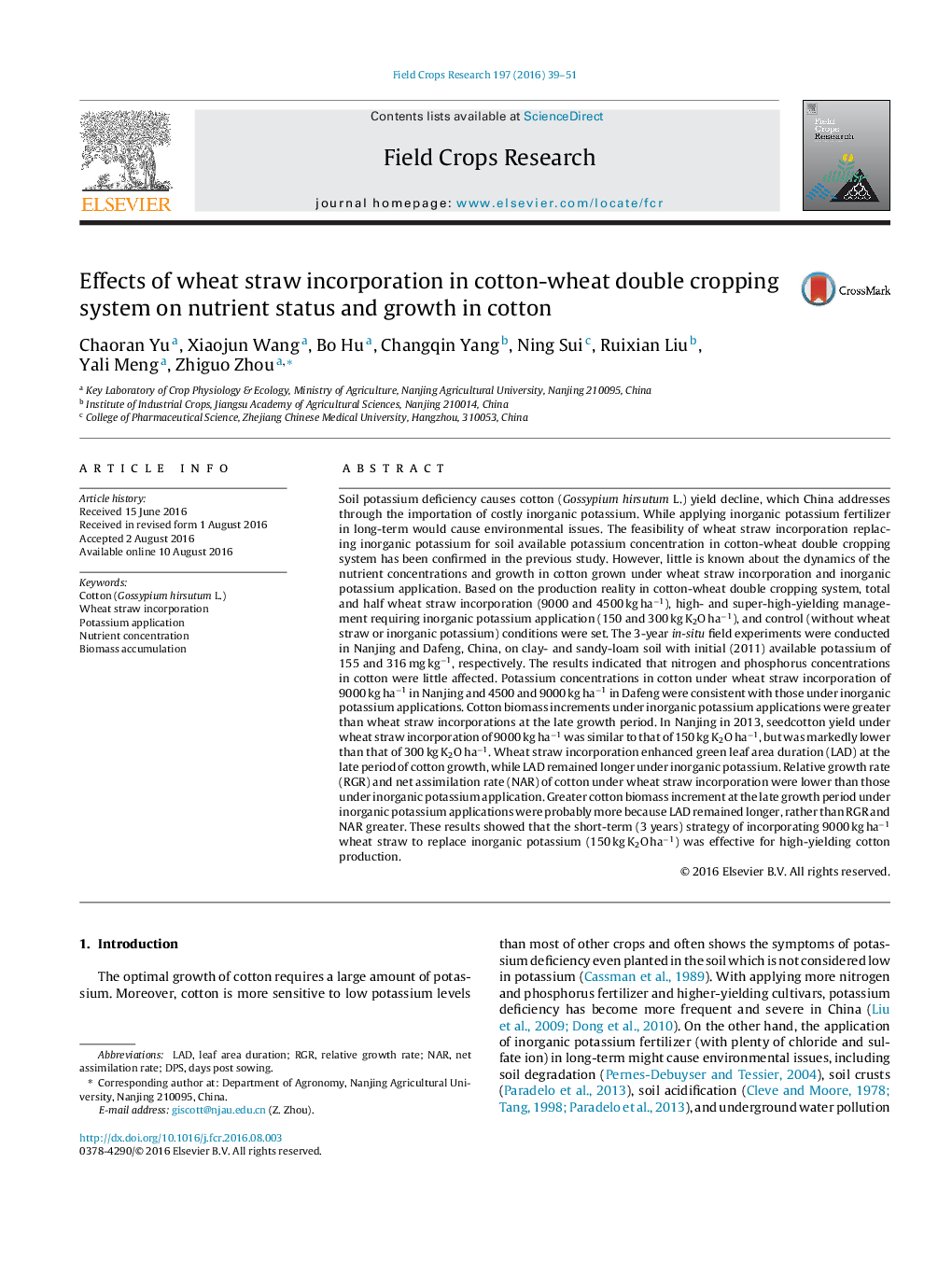| Article ID | Journal | Published Year | Pages | File Type |
|---|---|---|---|---|
| 6374363 | Field Crops Research | 2016 | 13 Pages |
Abstract
Soil potassium deficiency causes cotton (Gossypium hirsutum L.) yield decline, which China addresses through the importation of costly inorganic potassium. While applying inorganic potassium fertilizer in long-term would cause environmental issues. The feasibility of wheat straw incorporation replacing inorganic potassium for soil available potassium concentration in cotton-wheat double cropping system has been confirmed in the previous study. However, little is known about the dynamics of the nutrient concentrations and growth in cotton grown under wheat straw incorporation and inorganic potassium application. Based on the production reality in cotton-wheat double cropping system, total and half wheat straw incorporation (9000 and 4500 kg haâ1), high- and super-high-yielding management requiring inorganic potassium application (150 and 300 kg K2O haâ1), and control (without wheat straw or inorganic potassium) conditions were set. The 3-year in-situ field experiments were conducted in Nanjing and Dafeng, China, on clay- and sandy-loam soil with initial (2011) available potassium of 155 and 316 mg kgâ1, respectively. The results indicated that nitrogen and phosphorus concentrations in cotton were little affected. Potassium concentrations in cotton under wheat straw incorporation of 9000 kg haâ1 in Nanjing and 4500 and 9000 kg haâ1 in Dafeng were consistent with those under inorganic potassium applications. Cotton biomass increments under inorganic potassium applications were greater than wheat straw incorporations at the late growth period. In Nanjing in 2013, seedcotton yield under wheat straw incorporation of 9000 kg haâ1 was similar to that of 150 kg K2O haâ1, but was markedly lower than that of 300 kg K2O haâ1. Wheat straw incorporation enhanced green leaf area duration (LAD) at the late period of cotton growth, while LAD remained longer under inorganic potassium. Relative growth rate (RGR) and net assimilation rate (NAR) of cotton under wheat straw incorporation were lower than those under inorganic potassium application. Greater cotton biomass increment at the late growth period under inorganic potassium applications were probably more because LAD remained longer, rather than RGR and NAR greater. These results showed that the short-term (3 years) strategy of incorporating 9000 kg haâ1 wheat straw to replace inorganic potassium (150 kg K2O haâ1) was effective for high-yielding cotton production.
Keywords
Related Topics
Life Sciences
Agricultural and Biological Sciences
Agronomy and Crop Science
Authors
Chaoran Yu, Xiaojun Wang, Bo Hu, Changqin Yang, Ning Sui, Ruixian Liu, Yali Meng, Zhiguo Zhou,
